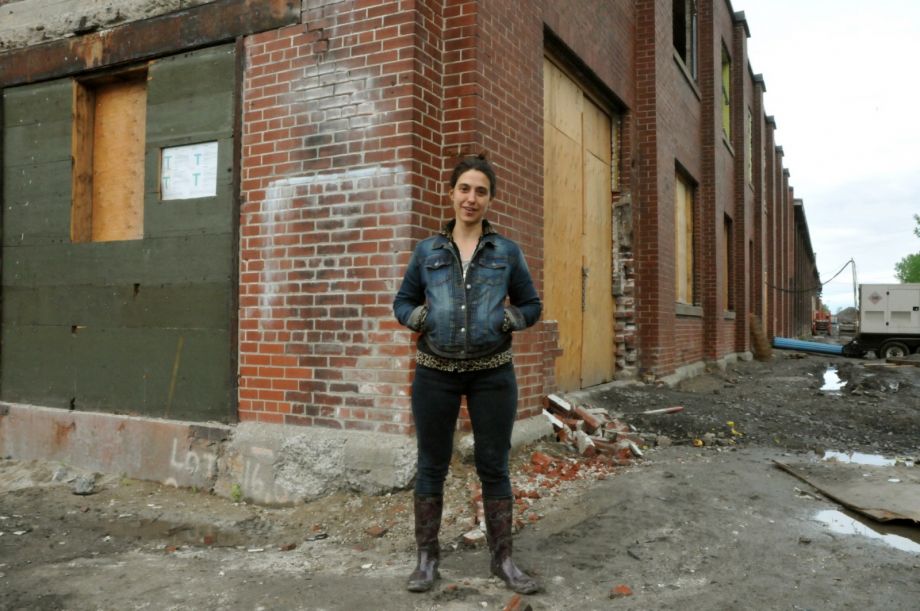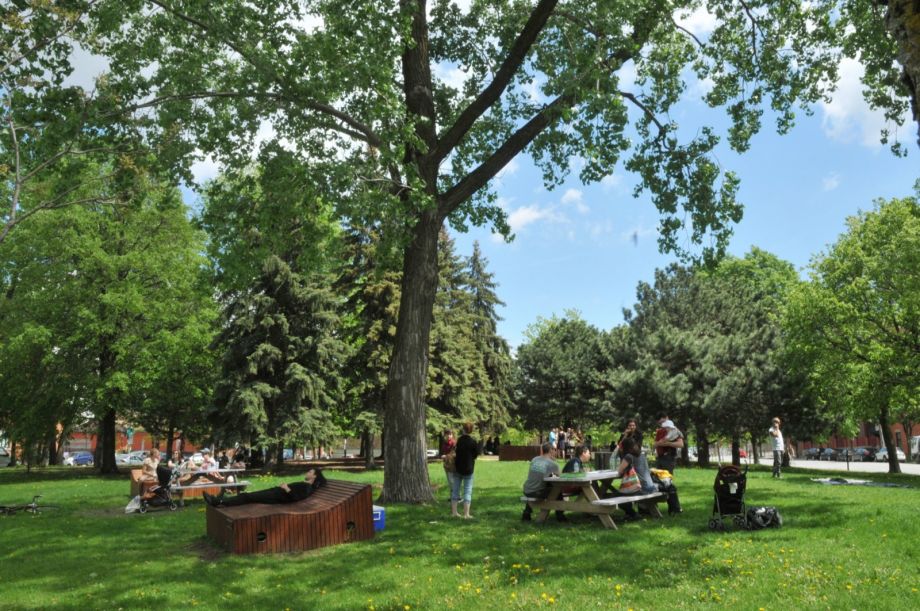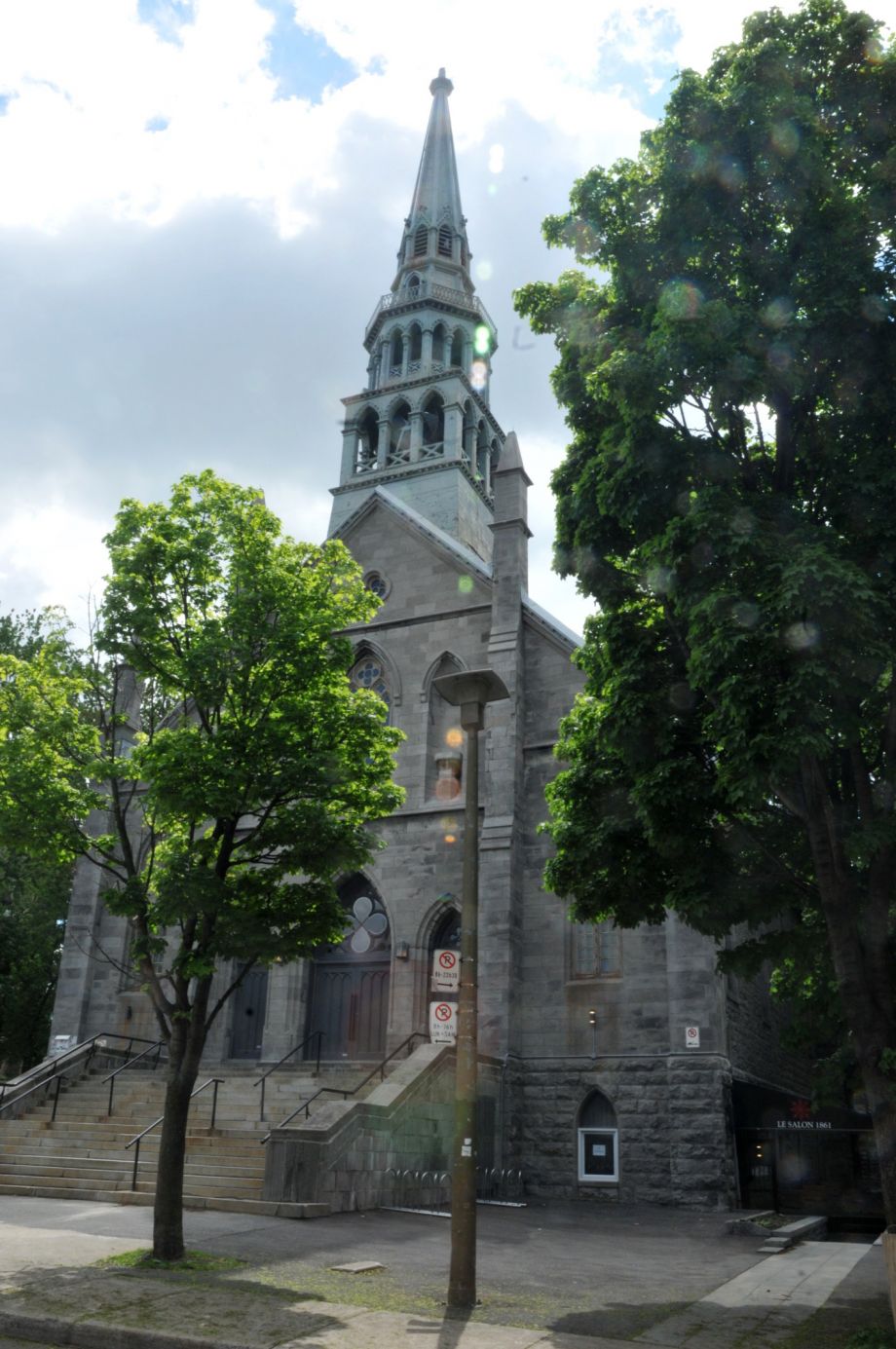Are You A Vanguard? Applications Now Open
This is your first of three free stories this month. Become a free or sustaining member to read unlimited articles, webinars and ebooks.
Become A MemberIn the heart of a historically working-class neighborhood just southwest of downtown Montréal, a 90,000-square-foot abandoned railroad warehouse has become an unlikely symbol of the city’s future.
The massive red-brick building known as Bâtiment 7 has been vacant since 2003, yet over the last decade it has drawn thousands of visitors to its Pointe-Saint-Charles neighborhood. Originally constructed between 1924 and 1946 by Canadian National (CN) Rail, the warehouse closed its doors in 2003 when transport company Alstom shuttered operations. In 2006, the decommissioned historic building not far from the banks of the St. Lawrence River sold for CA $1 to Group Mach, a local real estate developer with a plan to turn it into a casino. If the casino had moved forward the story would have ended there and North America would have one more place to play the slots. But thanks to a dedicated group of neighborhood residents, Montréal took a less common route, one that offers lessons for other cities seeking to determine their own future.
Today, Bâtiment 7 is being redeveloped into a community-owned, neighborhood hub designed to meet local needs for social and educational services, healthcare and fresh food. “We took to the streets,” says Judith Cayer, a community activist and project manager with the nonprofit group that ultimately gained ownership of the site. “We lobbied the municipal government.”
Their audacity paid off. In 2012, the property owner agreed to decontaminate the soil and hand the building over to the community along with CA $1 million in seed money. On April 28, ownership was legally transferred to the neighborhood collective. The Québec government, the city of Montréal and the southwest borough have agreed to collaboratively invest a total of CA $1.7 million into the project.
Plans include a cafe, a microbrewery, a food cooperative, artist studios, a hardware store, community gardens and a bike repair shop. Eventually, they will also incorporate a birthing center, a day care and co-working spaces. The goal is to open in January 2018. The development is expected to happen in phases.
The Montréalers working to make their neighborhood vision a reality know it won’t be easy. Like many historically working-class areas in the city, including Mile End, Saint-Henri, Griffintown and Hochelaga-Maisonneuve, Pointe-Saint-Charles is facing new stresses as gentrification drives up property values, threatening the stability of lower-income inhabitants. The Front d’action populaire en réaménagement urbain (FRAPRU), a Montréal social housing activist group, says that on average rent went up by 16 percent in Pointe-Saint-Charles between 2006 and 2011. A focus for neighborhood activism has been ensuring new development projects allow for 25 percent social housing (the average is usually around 15 percent).

Judith Cayer stands in front of Bâtiment 7.
For Cayer and the coalition of artists, activists, residents and architects working on Bâtiment 7, all of this is part of the puzzle.
“How do we make [our project] viable, financially and organizationally? In terms of management, how do we make it democratic?” Cayer says. “How do we ensure that it’s accessible, that it reflects the needs and priorities of the most marginalized and socioeconomically disadvantaged among us? How do we ensure it reflects our original mission?”
Finding answers will take hard work — and time. “This is a process of invention and experimentation, and will be for the next 20 years or so,” Cayer says.
Invention and experimentation are nothing new in Pointe-Saint-Charles. Long before European settlement, St. Lawrence Iroquoians used the lands for fishing and goose hunting. With the arrival of French colonists in the mid-17th and 18th centuries, it was transformed into a sparsely populated religious community where Catholic Sulpicians carried out agricultural and missionary work.
Industry would eventually transform the area. As new infrastructure, including the Lachine Canal, the Victoria Bridge and the Grand Trunk Railway, cropped up to support trade along the St. Lawrence River, companies and factories set up shop in the area. Tracts of rowhouses were built to accommodate the droves of people and their families who came to make a living: French Canadians, Irish Catholics fleeing famine, Protestant immigrants from England and Scotland, as well as Poles, Ukrainians, Lithuanians and African-Americans. By the end of the 19th century, Pointe-Saint-Charles was the industrial center not only of Montréal, but also of Canada.
Then came the Great Depression of the 1930s, and creeping economic decline. Large-scale investments in highway transportation systems, the opening of the St. Lawrence Seaway and the closing of the Lachine Canal siphoned industry away from the Pointe. Factories closed their doors or moved to other parts of the city made accessible by new roads. People lost their jobs. Poverty increased. As Montréal itself went through massive social, political and economic upheaval over the following decades, the neighborhood hemorrhaged tens of thousands of people who packed up and left in search of employment elsewhere.
Yet Pointe-Saint-Charles survived. The fights endured over the generations — battles against pollution, job losses and poverty — may have even given the community the tenacity it needed to take on Bâtiment 7.
“It was a multigenerational effort, one that brought together all different groups,” Cayer says. “Neighbors really talk to each other when we cross paths. What we have accomplished already gives a certain pride.”
Others around the city are watching too.
Guillaume Lavoie is a Montréal city councillor for the borough of Rosemont-La Petite-Patrie (and a 2015 Next City Vanguard). He was elected to local office on the ticket of a newish municipal political party with roots in Jane Jacobs-style tactical urbanism called Projet Montréal.
Lavoie says the citizen-driven win at Bâtiment 7 is part of a bigger shift happening in neighborhoods all over Montreal. “When it comes to tactical urbanism, we’re seeing a big change in the public discourse,” he says. “Ten years ago, it was all about city management. Policy was basically about fixing potholes, funding the police, maybe cleaning up the public parks once in a while.”
Open the newspaper today and a different conversation is happening. “We’re talking about what it means to live in Montréal,” Lavoie says. “We’re talking about the journey from home to school or work, and how to make it safer and more beautiful. The average citizen is [more] informed and engaged.”
Municipal governance in Montréal is complex. It is composed of an executive committee, a city council, borough councils and an agglomeration council. The city has 19 boroughs, which range in size from 18,000 to 164,000 residents. Voters elect one city mayor who is also the mayor of Ville-Marie borough, 18 borough mayors, 46 city councillors and 38 borough councillors. Elected councillors and the mayor belong to political parties, which is rare in Canada. But, Lavoie notes, “no matter what party you’re with, the urban conversation has become more sophisticated.”
The change isn’t confined to the political realm either. Universities and other civic institutions are thinking about how to connect to the city beyond their gates. “Increasingly, the question is this: How can we take institutions [like Concordia] that are community assets, and which have people, resources, equipment and facilities attached to them, and do even more with the communities we are a part of,” says Alan Shepard, president of Concordia University. (Concordia University is a co-host of Next City’s 2017 Vanguard Conference in Montréal.)
“When it comes to the future of urbanism, there are all sorts of things happening that are going to impact how we think about the role of institutions in building healthier, more resilient cities,” says Shepard. “We need to be thinking about everything from shifting work practices and workforce expectations, to demographics, to traffic patterns and pedestrian safety.”
It may not happen as fast as people would like, he cautions, because institutions are often slow to change. But it’s happening.
Montréal turns 375 this year. The anniversary is a cause for celebration and for reflection in a city that has undergone seismic shifts since its location at the confluence of the St. Lawrence and Ottawa rivers first attracted traders. While Montréal was once Canada’s financial and business capital, the city’s current identity is inextricably tied to the social, cultural and political upheaval that occurred in the 1960s and ’70s, an era known as the Quiet Revolution. At that time, the majority French-Canadian population threw off the yoke of the Roman Catholic Church and took the reins of education, business and government away from both the clergy and a small but powerful Anglophone upper class.
It was during this period that Montréal was transformed by a series of megadevelopment projects including the Place des Arts complex, Expo ‘67, the métro, the Underground City and many landmark corporate buildings including Luigi Moretti’s Tour de la Bourse, I.M. Pei’s cruciform Place Ville Marie, and Ludwig Mies van der Rohe’s Westmount Square.
It was an exciting time, but hurried construction, financial mismanagement and poor craftsmanship marred the achievements. The 1976 Summer Olympics, for instance, brought the city a new stadium, velodrome and other recreational amenities as well as apartment units and parking lots. It put the city, which is in Canada’s only predominantly French-speaking province, Québec, on the international stage. Yet all the construction plunged the city into a staggering CA $1.5 billion debt that would not be paid off until 2006.
The same year that Montréal hosted the Olympics, the province of Quebec elected the nationalist Parti Québécois into office. The political party’s implementation of strict laws to promote the French language provoked an outmigration of Anglophones and their business interests, including capital and corporate head offices that pulled up roots and migrated west down Highway 401 to Toronto.
The city was further destabilized by two Québec independence referendums, in 1980 and 1995. The economic recession of the late 1980s and 1990s also took a toll. Between 1971 and 1996, the city of Montréal lost 60 percent of its manufacturing jobs and throughout the 1990s Montréal’s unemployment rate was the highest of all comparatively sized North American metro areas. Montréal’s fabled commercial arteries — Boulevard Saint-Laurent (known locally as “The Main”) and Rue Saint-Catherine — became better known for their shuttered storefronts than their glittering nightlife and world-class shopping. While cheap rents made Montréal a great place for artists, musicians and students to live, the tight job market meant that many students — particularly those who couldn’t speak French well enough — left as soon as they graduated. The city suffered from years of inefficient government, corruption, stagnation and neglect.
But the tide has started to turn.

Montréalers relax in Le Champ des Possibles.
Take, for example, Le Champ des Possibles (Field of Possibility) in the trendy Mile End neighborhood in the Plateau borough. The public space is co-managed by a local nonprofit organized by residents who came together to reclaim an abandoned space. The site was an overgrown meadow adjacent to the train tracks and abandoned by Canadian Pacific Rail in the late 1980s. Over the decades of disuse, the field had become a cherished bit of green space in a gentrifying area that was experiencing new development at a faster pace than residents were used to. In 2006, a grassroots group began a fight to keep it as an open, public space. After years of mobilization and negotiations with the municipal government, these residents struck a deal with the borough leadership in 2013. The landmark agreement, brokered by Project Montréal, kept the meadow as a community space co-managed by the borough and a local nonprofit organization called Les Amis du Champ des Possibles. The borough and its nonprofit partner have committed to preserving the area’s biodiversity, and maintaining it as place for education and community gathering.

Salon 1861 is a multipurpose meeting space for community groups, businesses, researchers, social entrepreneurs and local residents.
Salon 1861 on rue Richmond in Little Burgundy is another example how a collaborative, grassroots approach to development is reshaping Montréal’s neighborhoods. Bordering Pointe-Saint-Charles, Little Burgundy is another former industrial neighborhood with a rich history in the southwest of Montréal. Historically home to a black Anglophone working-class community, it is also known as the birthplace of local jazz legends Oscar Peterson and Oliver Jones. St. Joseph’s Church, built in 1861 by the Sulpicians and community volunteers, was one of the neighborhood’s landmark buildings before the church stopped operating. It had been abandoned for several years when a local developer named Natalie Voland set her sight on its reinvention. Armed with degrees in social work and political science, Voland joined her family real estate development business when her father fell ill in 1996. Her background led her to seek out a balance between serving the social and economic needs of a community, while managing a profit-driven model of real estate development. The family business, Quo Vadis Property Management Company, had purchased the old church with a vision of condos. But around the same time the sale was made, McGill University was doing work in the area with an eye to developing more cultural amenities and Voland soon made a connection with researchers there. From the beginning, the goal was to collaborate with a range of stakeholders, including students and others associated with the university and other civic institutions. The result? A multipurpose space where community groups, businesses, researchers, social entrepreneurs and local residents can meet up to network, share resources and train employees. Salon 1861 hosts a full-service event hall and a restaurant that sources local produce. There are plans to build an urban garden that nearby residents can use. The collaborative development has worked out to benefit Little Burgundy in ways that condos, or even a new university building, never would have.
“Institutions need to listen to communities,” Cayer says. “They need to be facilitators of the existing energy on the ground.”
Back at Bâtiment 7, Cayer and her team are working hard to bring in the development their neighbors want to see. They know that they alone can’t solve the challenges of a city. But project by project, they can redefine how residents interact with institutions, government and the built environment. They can create something new.
Celine Cooper is a columnist for the Montreal Gazette. She sits as an executive board member of the Association for Canadian Studies,the Montréal Press Club, and is an ambassador with the Contact MTL Greater Montréal Ambassador’s Network. She is a PhD Candidate at the Ontario Institute for Studies in Education, University of Toronto.
Jaime is a photographer living and working in montreal. Her personal work can be found here and professional work here.

20th Anniversary Solutions of the Year magazine